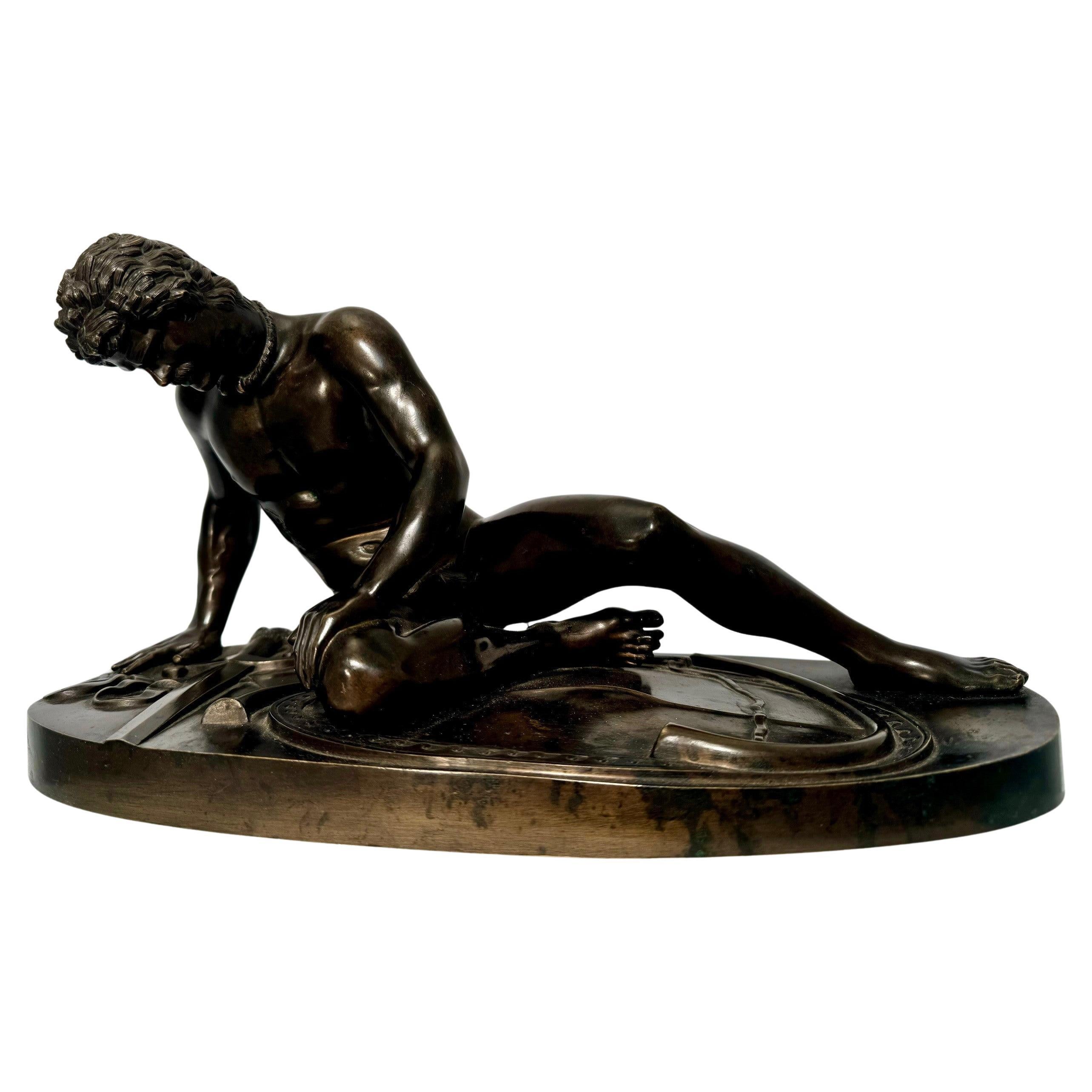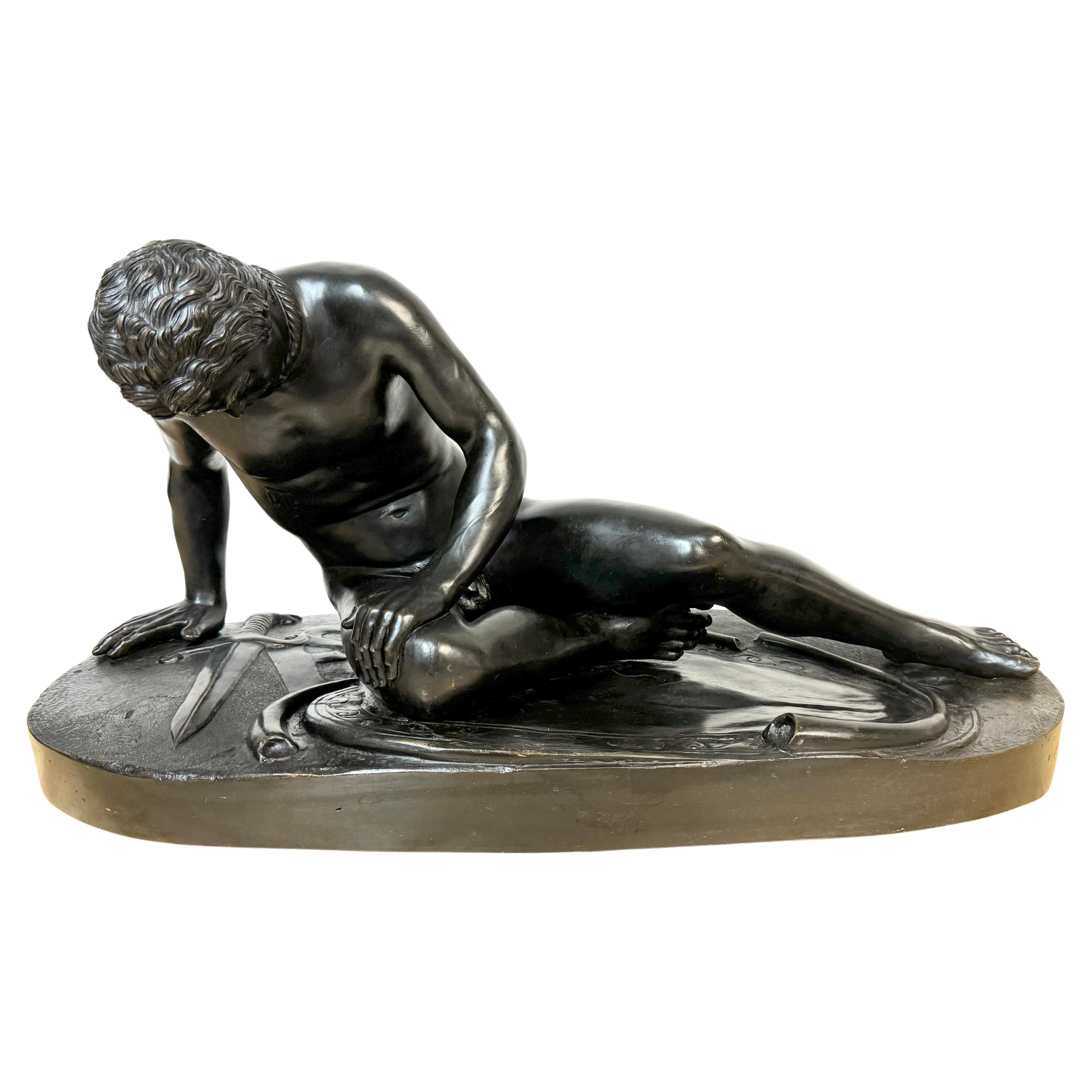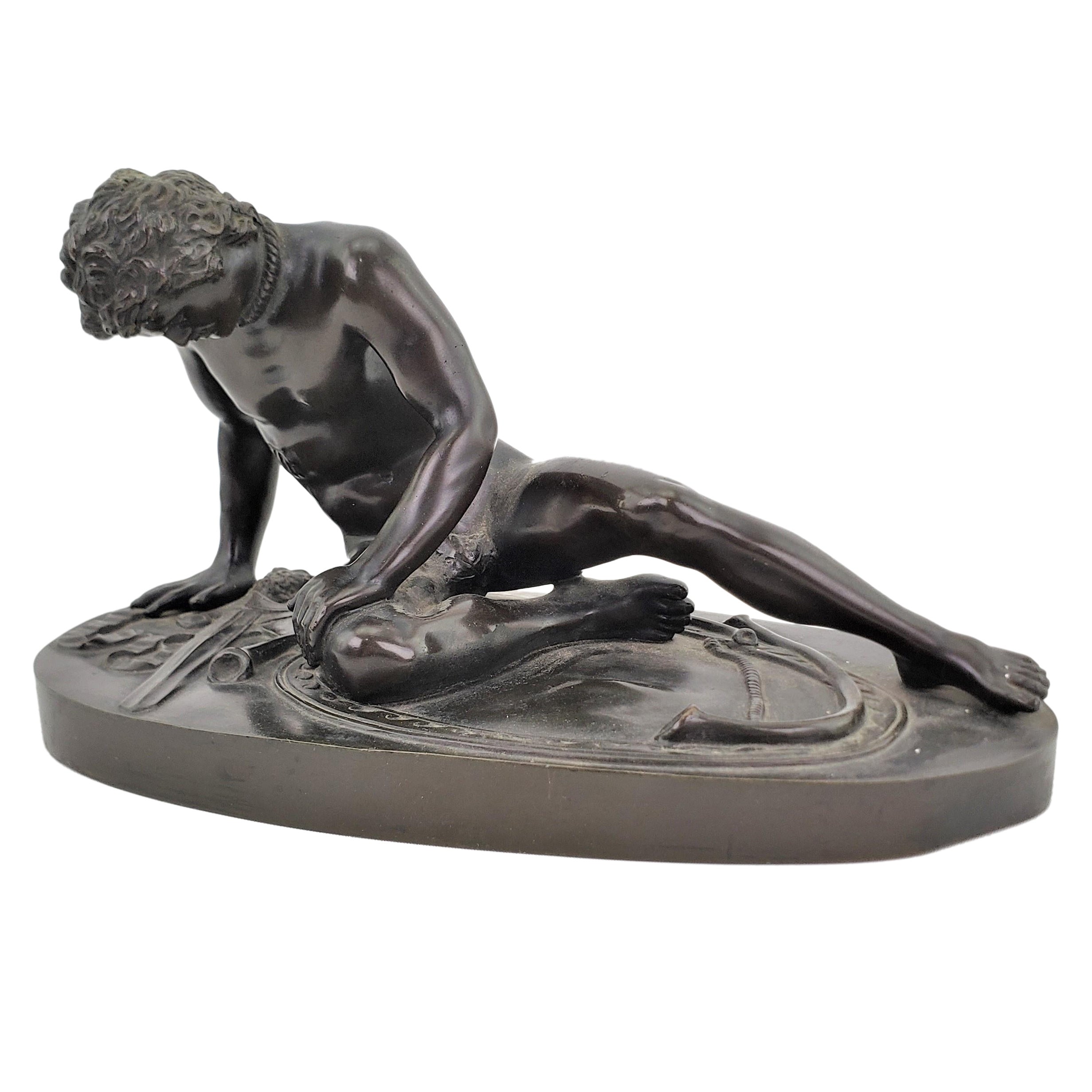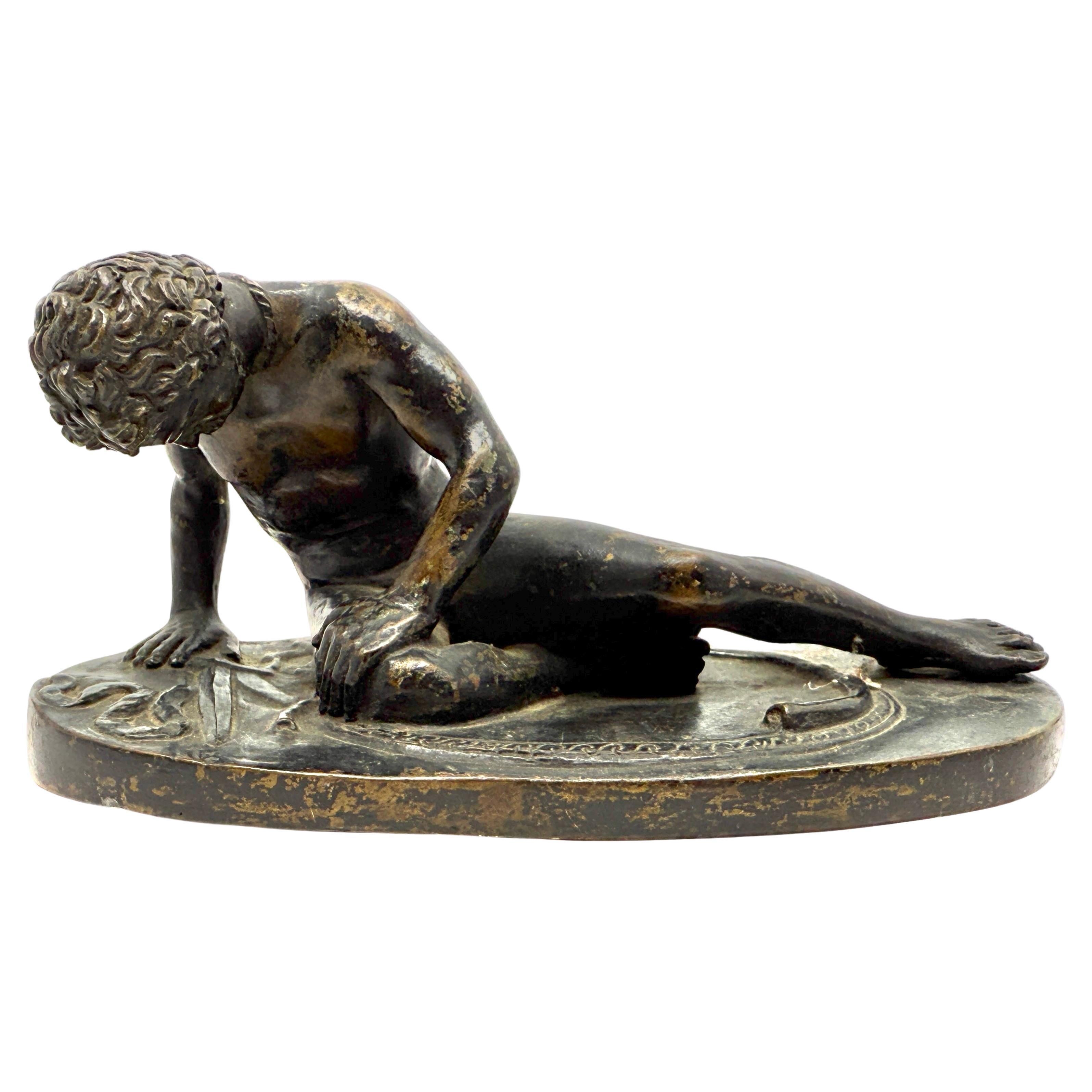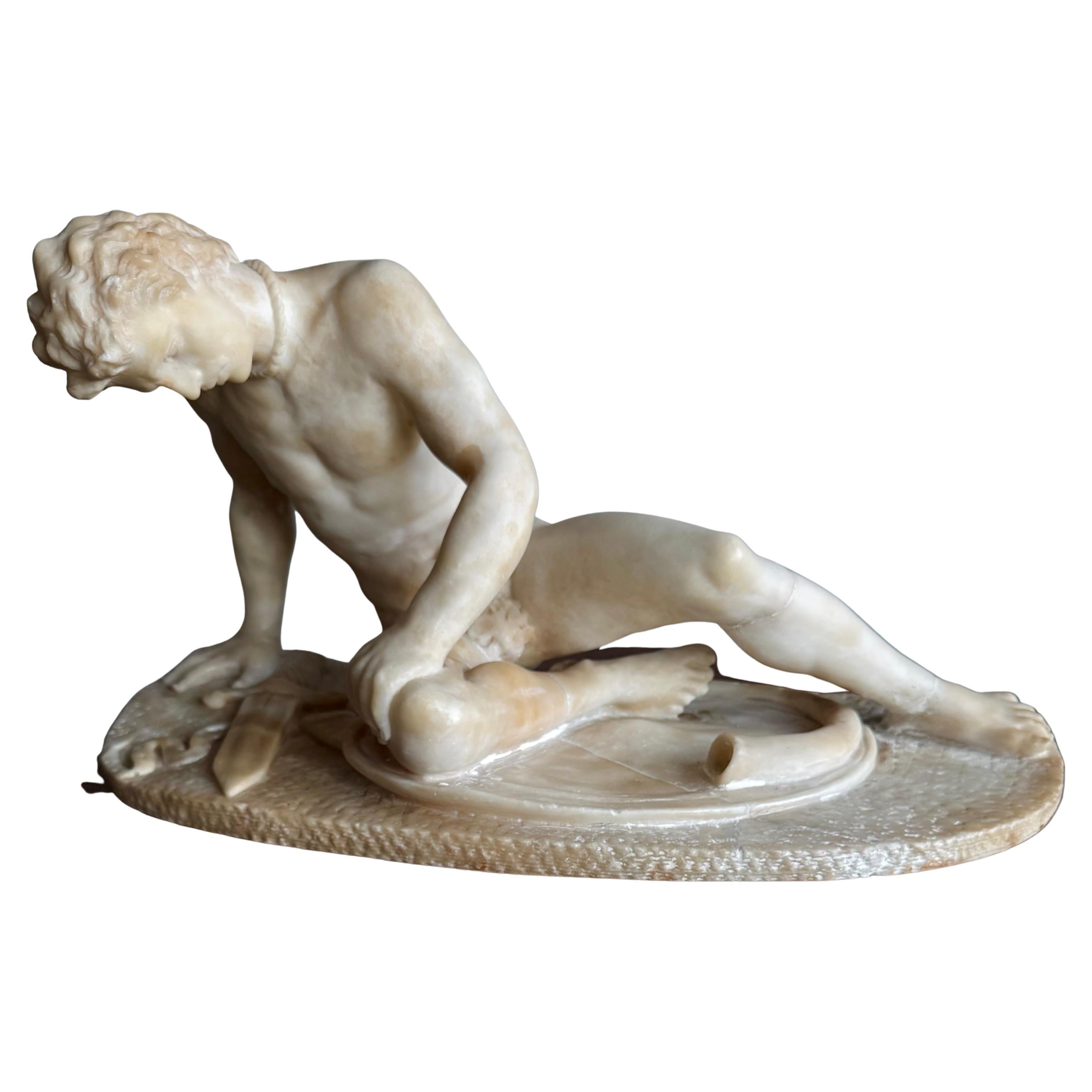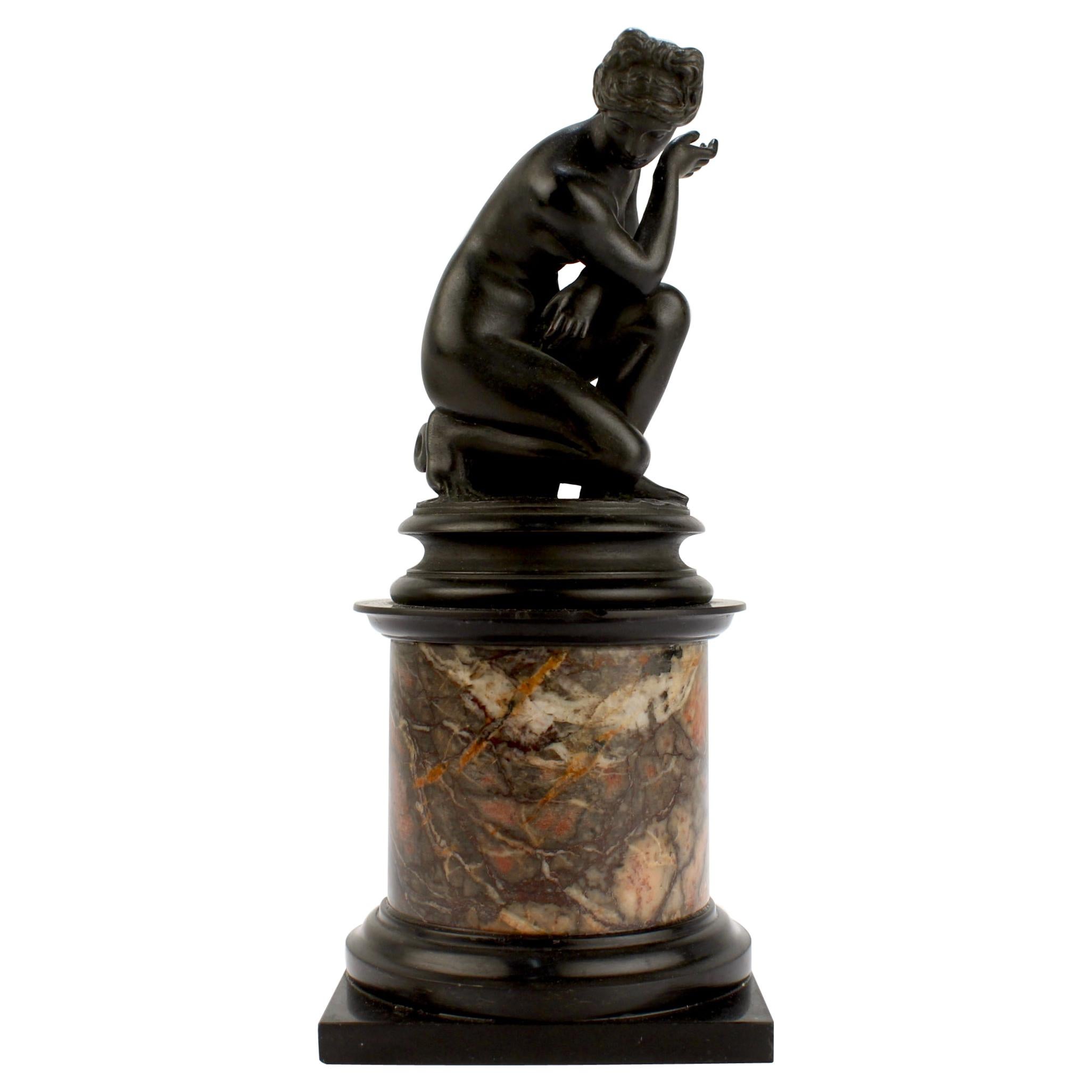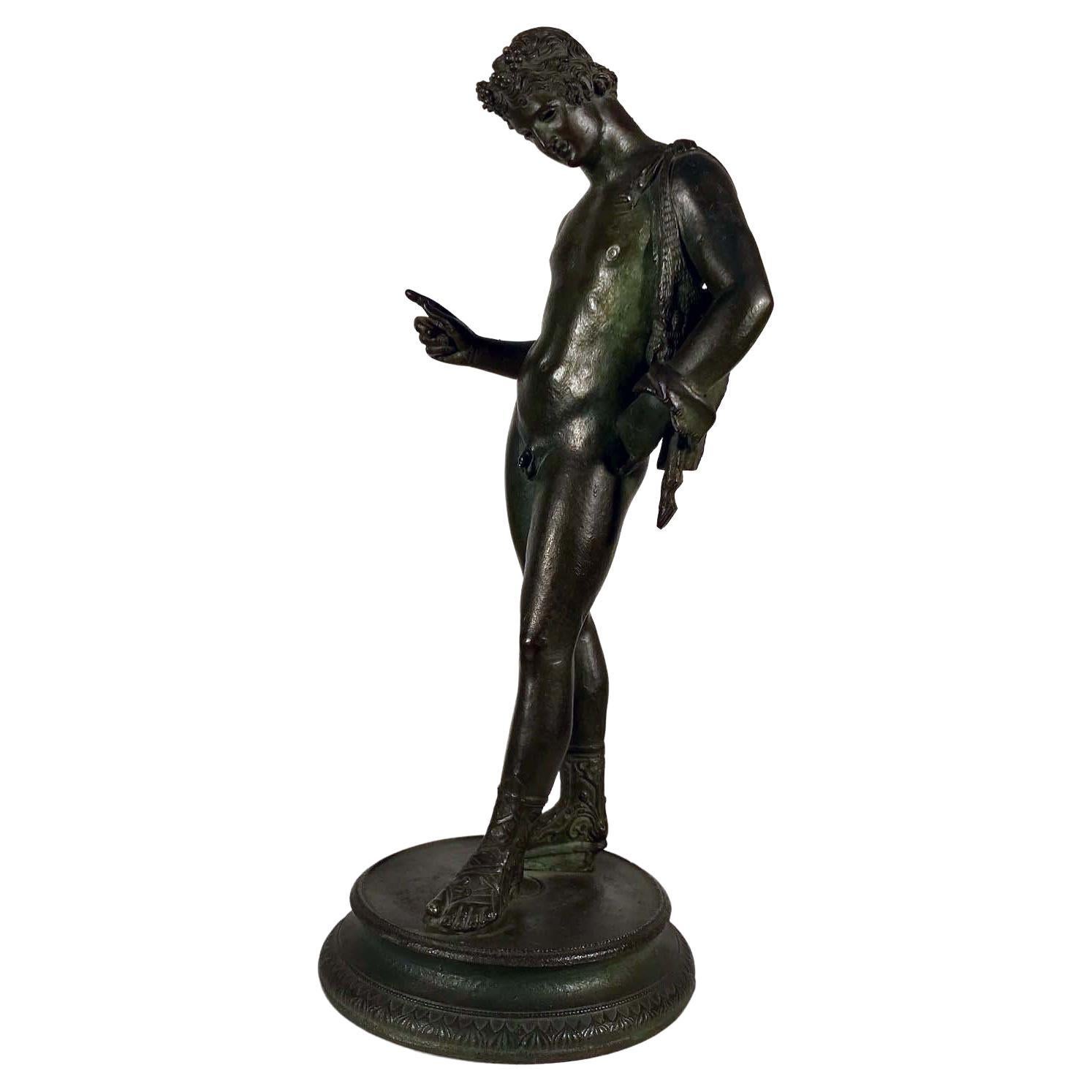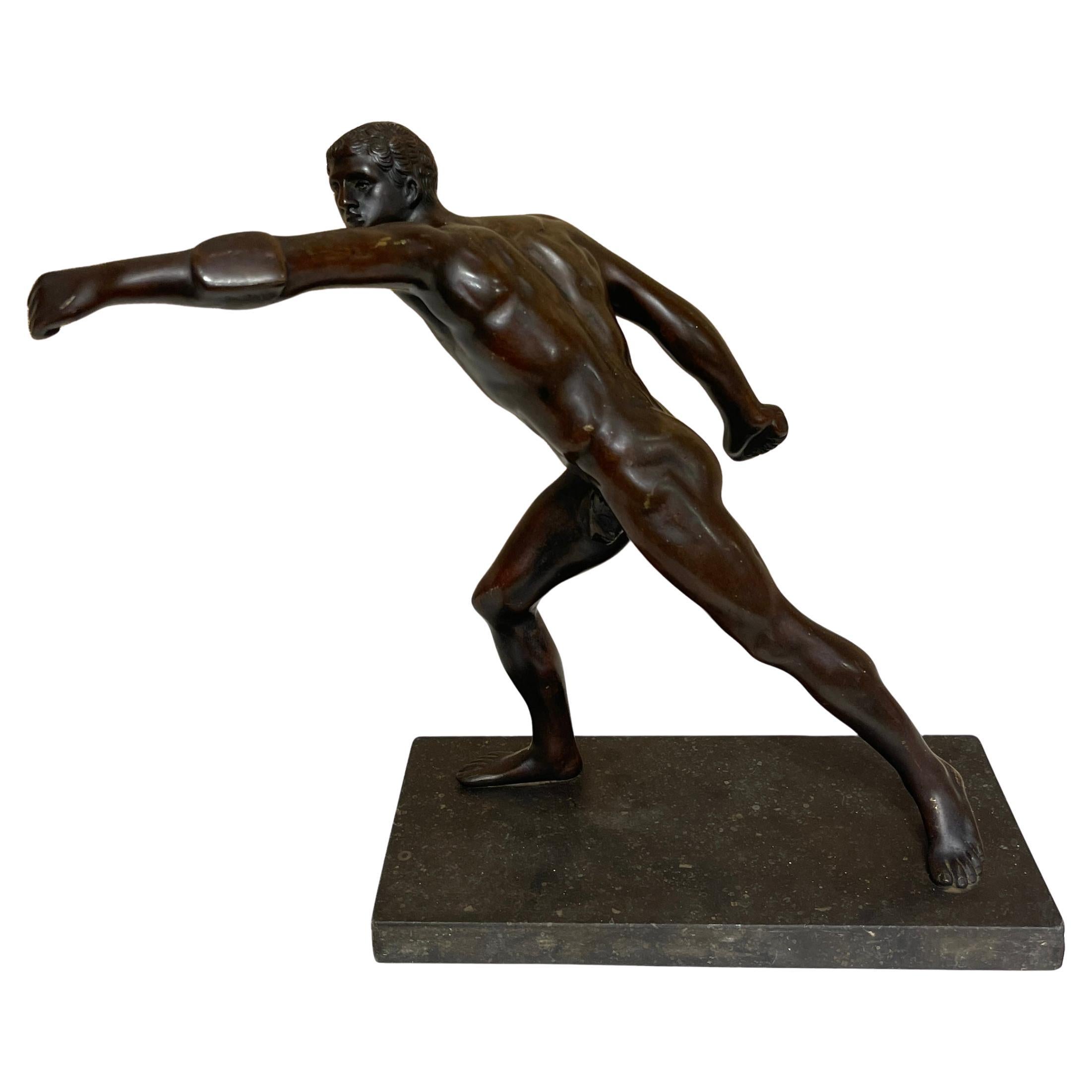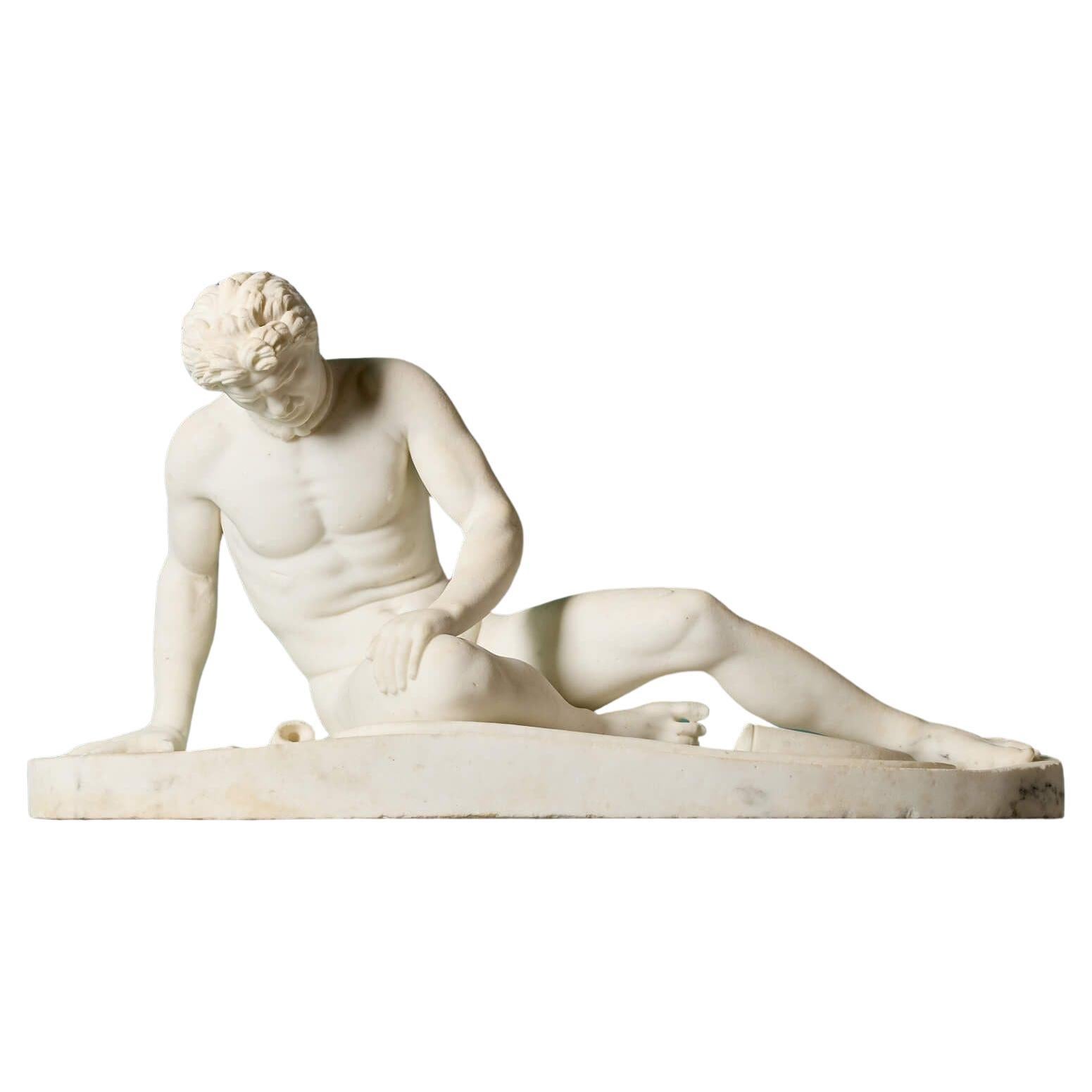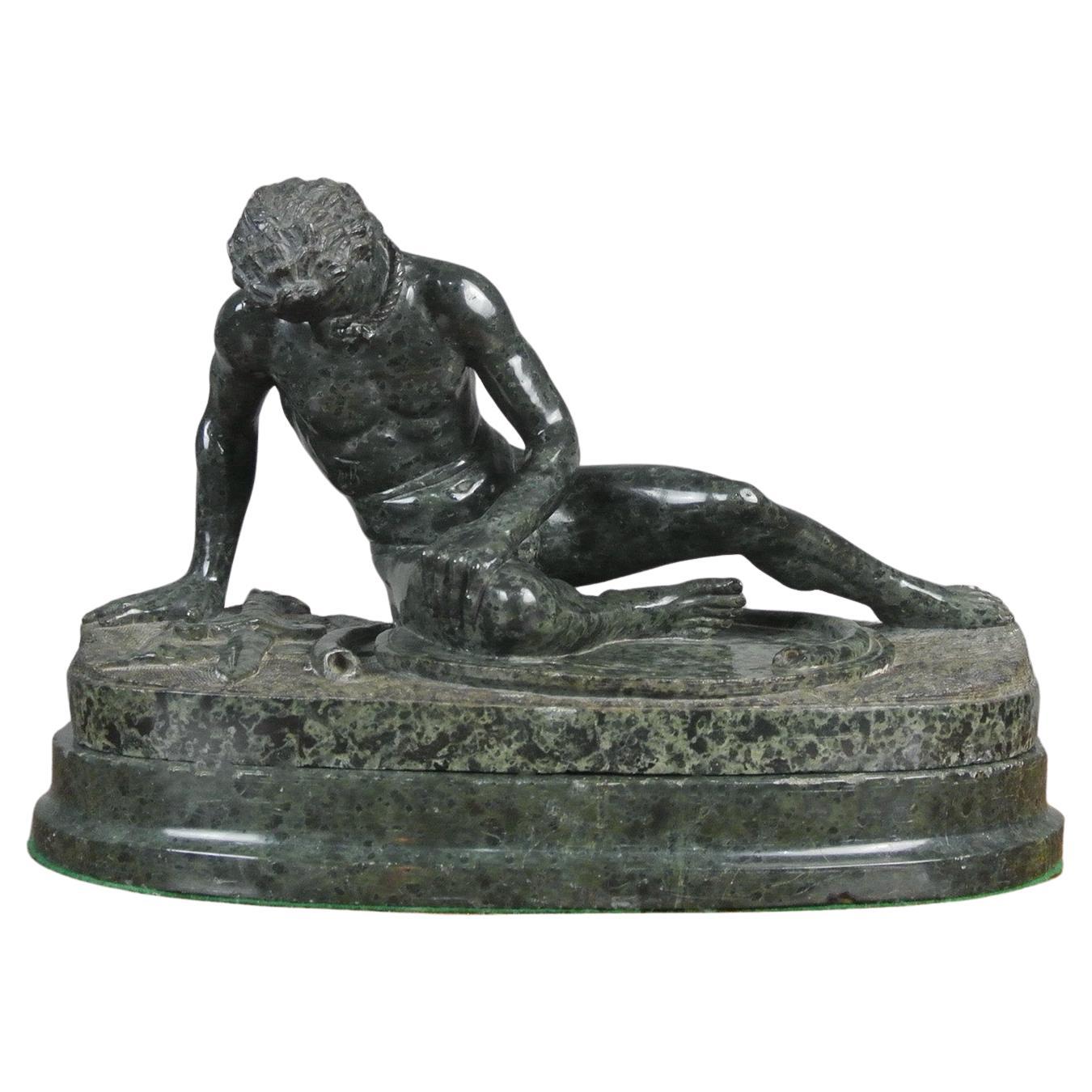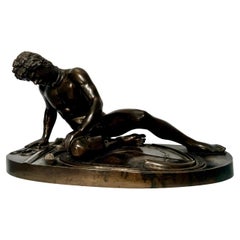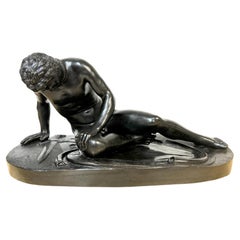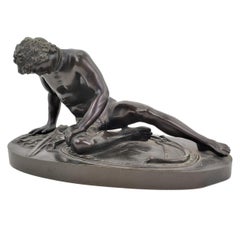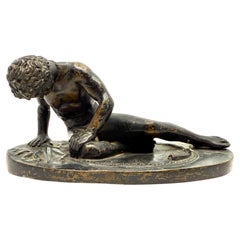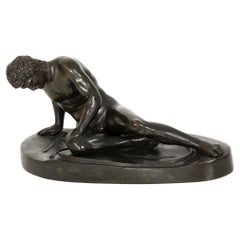
Italian Grand Tour Bronze Sculpture of “The Dying Gaul” after the Antique
View Similar Items
Video Loading
Want more images or videos?
Request additional images or videos from the seller
1 of 22
Italian Grand Tour Bronze Sculpture of “The Dying Gaul” after the Antique
About the Item
- Dimensions:Height: 6.13 in (15.58 cm)Width: 12.13 in (30.82 cm)Depth: 6 in (15.24 cm)
- Style:Grand Tour (Of the Period)
- Materials and Techniques:
- Place of Origin:
- Period:
- Date of Manufacture:Unknown
- Condition:
- Seller Location:Shippensburg, PA
- Reference Number:Seller: 406DQX18P1stDibs: LU1059041080312
About the Seller
4.9
Recognized Seller
These prestigious sellers are industry leaders and represent the highest echelon for item quality and design.
Platinum Seller
Premium sellers with a 4.7+ rating and 24-hour response times
Established in 2009
1stDibs seller since 2014
499 sales on 1stDibs
Typical response time: 1 hour
Authenticity Guarantee
In the unlikely event there’s an issue with an item’s authenticity, contact us within 1 year for a full refund. DetailsMoney-Back Guarantee
If your item is not as described, is damaged in transit, or does not arrive, contact us within 7 days for a full refund. Details24-Hour Cancellation
You have a 24-hour grace period in which to reconsider your purchase, with no questions asked.Vetted Professional Sellers
Our world-class sellers must adhere to strict standards for service and quality, maintaining the integrity of our listings.Price-Match Guarantee
If you find that a seller listed the same item for a lower price elsewhere, we’ll match it.Trusted Global Delivery
Our best-in-class carrier network provides specialized shipping options worldwide, including custom delivery.More From This Seller
View AllItalian Grand Tour Antique Bronze Sculpture, Bust of Julius Caesar
Located in Shippensburg, PA
A finely cast and beautifully patinated bust of Julius Caesar, it likely originates from Rome circa the third quarter of the 19th century and rests over its original violet breché ma...
Category
Antique 19th Century Italian Grand Tour Busts
Materials
Marble, Bronze
Grand Tour Bronze Sculpture Giuliano de Medici after the Antique, 19th century
Located in Shippensburg, PA
AFTER MICHELANGELO OF ANTIQUITY
Grand Tour Model of Giuliano de Medici from the Medici Chapel in Florence
Patinated sand-cast bronze numbered on the back corner "5505", otherwise u...
Category
Early 20th Century European Grand Tour Figurative Sculptures
Materials
Bronze
Grand Tour Italian Antique Bronze Sculpture of Narcissus by Giorgio Sommer
By Giorgio Sommer
Located in Shippensburg, PA
GRAND TOUR
Italy, late 19th century
"Narcissus"
Patinated bronze cast by the Giorgio Sommer foundry in Italy, original ink stamp to underside cast circa 1890-1910
stock ref. 406...
Category
Antique Late 19th Century Italian Grand Tour Figurative Sculptures
Materials
Bronze
19th Century Italian Grand Tour Antique Bronze Sculpture of “Narcissus”
Located in Shippensburg, PA
RAND TOUR
Italy, late 19th century
"Narcissus"
Patinated bronze cast by the Michele Amodio foundry of Naples, signed to base cast third quarter of 19th century
Item # 406SKN07W
...
Category
Antique 19th Century Italian Grand Tour Figurative Sculptures
Materials
Bronze
Grand Tour Marble Sculpture Statue Bust of Venus de Milo after the Antique
Located in Shippensburg, PA
GRAND TOUR MODEL OF VENUS DE MILO AFTER ANTIQUITY
Italian a late 19th to early 20th century copy of the original of Antiquity carved from a single block of Carrara marble unsigne...
Category
Antique 19th Century Italian Grand Tour Figurative Sculptures
Materials
Carrara Marble
French Antique Bronze Sculpture of “Tiger and Tortoise” after Georges Gardet
By Georges Gardet
Located in Shippensburg, PA
GEORGES GARDET
French, 1863-1939
"La Tigre et la Tortu" [The Tiger and the Tortoise] (1886)
Sand-cast bronze with verde, red, brown and black patination signed to the base "GEORGE...
Category
Early 20th Century French Romantic Animal Sculptures
Materials
Bronze
You May Also Like
Grand Tour bronze figure of “The Dying Gaul”, After The Antique
Located in Montreal, QC
A late 19th century Grand Tour bronze figure of “The Dying Gaul”, after the antique. The Dying Gaul depicts a warrior in his final moments, next to his shield and sword, his face contorted in pain just before he collapses from the mortal wound to his chest The original marble figure, which is in the Capitoline museum in Rome is thought to be a Roman copy of a Greek sculpture in Bronze. As an image of a vanquished enemy, the sculpture embodies courage in defeat, self-possession in the face of death, and the recognition of nobility in an alien race.
“The Dying Gaul” was found in Rome with another ancient marble...
Category
Antique Late 19th Century Italian Classical Greek Figurative Sculptures
Materials
Bronze
Large Italian Grand Tour Bronze Sculpture "Dying Galata" /Dying Gaul, C. 1875
Located in West Palm Beach, FL
Large Italian Grand Tour Bronze Sculpture "Dying Galata"/Dying Gaul, C. 1875, Attributed to Naples Foundry
A remarkable large Italian Grand Tour bronze sculpture titled "Dying Galata" or "Dying Gaul," dating circa 1875 and attributed to the renowned Naples Foundry. This exquisite piece, an expertly cast bronze, retains its original black-brown patina and boasts a substantial size, standing 12 inches high, 26.5 inches wide, and 13.5 inches deep. It is a distinguished example of the iconic Grand Tour sculptures, which were popular souvenirs for affluent travelers during the 19th century.
The sculpture is a faithful rendition of the ancient Roman marble statue "The Dying Gaul," also known as "The Dying Galatian" or "The Dying Gladiator." The original marble, now housed in the Capitoline Museums in Rome, is a Roman copy of a lost Greek bronze sculpture...
Category
Antique 19th Century Italian Grand Tour Figurative Sculptures
Materials
Bronze
Antique Grand Tour Ornately Cast 'The Dying Gaul' Italian Bronze Sculpture
Located in Hamilton, Ontario
This very ornately cast bronze sculpture is unsigned, but presumed to have been done in Italy in approximately 1900, in the Classical Roman style. This figurative study depicts the famous Classical Roman sculpture known as 'The Dying Gaul...
Category
Early 20th Century Italian Classical Roman Figurative Sculptures
Materials
Bronze
Grand Tour Neoclassical Bronze of “The Dying Gaul”
Located in Palm Springs, CA
A nice little bronze Grand Tour souvenir bronze of the Dying Gaul a famous sculpture of antiquity preserved in Rome. This bronze has nice detail. The patina is worn in some places and it is in estate found condition. We haven’t tried to clean or polish it.
Some patina loss minor nicks and surfaces scratches, please see the detailed photos.
For this interested this from Wikipedia about the original sculpture:
The Dying Gaul, also called The Dying Galatian[2] (Italian: Galata Morente) or The Dying Gladiator, is an ancient Roman marble semi-recumbent statue now in the Capitoline Museums in Rome. It is a copy of a now lost Greek sculpture from the Hellenistic period (323–31 BC) thought to have been made in bronze.[3] The original may have been commissioned at some time between 230 and 220 BC by Attalus I of Pergamon to celebrate his victory over the Galatians, the Celtic or Gaulish people of parts of Anatolia. The original sculptor is believed to have been Epigonus, a court sculptor of the Attalid dynasty of Pergamon.
Until the 20th century, the marble statue was usually known as The Dying Gladiator, on the assumption that it depicted a wounded gladiator in a Roman amphitheatre.[4] However, in the mid-19th century it was re-identified as a Gaul or Galatian and the present name "Dying Gaul" gradually achieved popular acceptance. The identification as a "barbarian" was evidenced for the figure's neck torc, thick hair and moustache, weapons and shield carved on the floor, and a type of Gallic carnyx between his legs.[5]
Description
The white marble statue, which may originally have been painted, depicts a wounded, slumped Gaulish or Galatian Celt, shown with remarkable realism and pathos, particularly as regards the face. A bleeding sword puncture is visible in his lower right chest. The warrior is represented with characteristic Celtic hairstyle and moustache with a Celtic torc...
Category
Early 20th Century Italian Figurative Sculptures
Materials
Bronze
Mid-19th Century Grand Tour Bronze Figurative Sculpture 'The Dying Gaul', Italy
Located in North Miami, FL
Mid-19th Century Grand Tour Bronze Figurative Sculpture 'The Dying Gaul', Italy
By: unknown
Material: bronze, copper, metal
Technique: cast, molded, polished, metalwork, patinated
D...
Category
Antique 1850s Italian Grand Tour Figurative Sculptures
Materials
Metal, Bronze, Copper
Hand Carved Antique Alabaster Sculpture / Statue of The Dying Gaul, Grand Tour
Located in Lisse, NL
Handcarved and remarkable work of art of the 'Dying Gaul’ or 'The Dying Galatian'.
If you are a collector of rare and good quality antiques then this rare and wonderfully hand carve...
Category
Antique Late 19th Century Italian Grand Tour Figurative Sculptures
Materials
Alabaster
Recently Viewed
View AllMore Ways To Browse
Grand Tour Seal
Pair Blackamoors
Pair Bronze Thai Women Sculptures
Pair Of Antique Hebrew Figures
Pair Of Murano Glass And Sterling Silver By Vittorio Angini
Paper Mache Stephen Hansen
Paulina Borghese
Pearlware Seasons
Peasant Woman With Apron Holding A Basket
Picault La Pensee
Pintus Remo
Psyche Cupids Kiss Bronze
Punch And Judy Door Stops
Raphael Schwartz
Rare Bronze Indian Fireworks Cannon
Rein Follestad
Remington Rattlesnake
Reuben Karol
